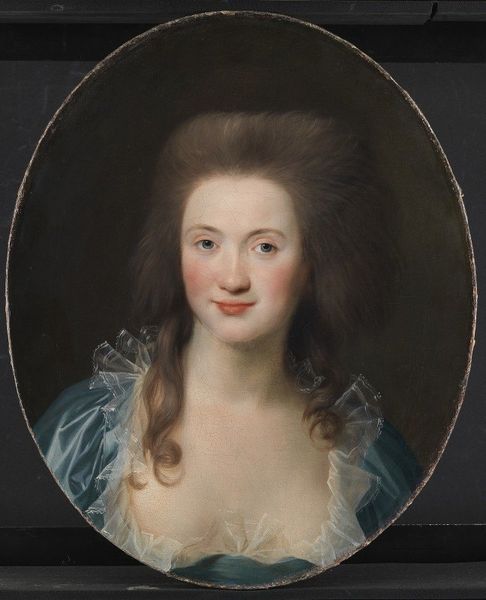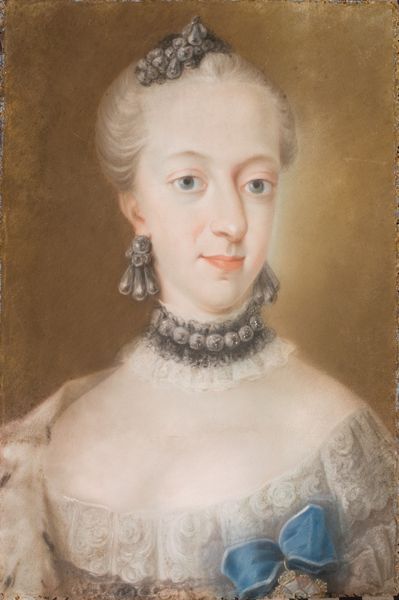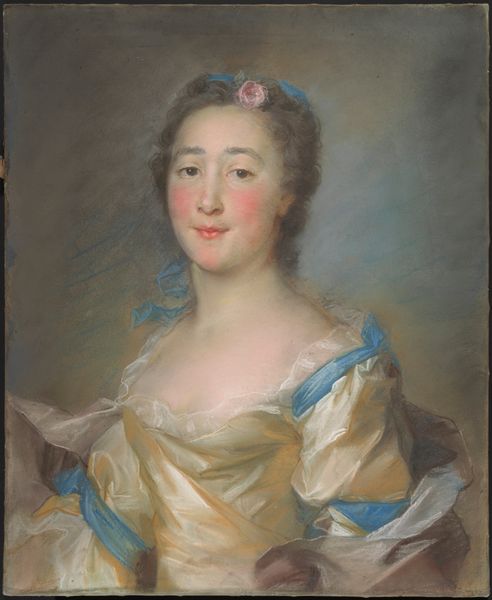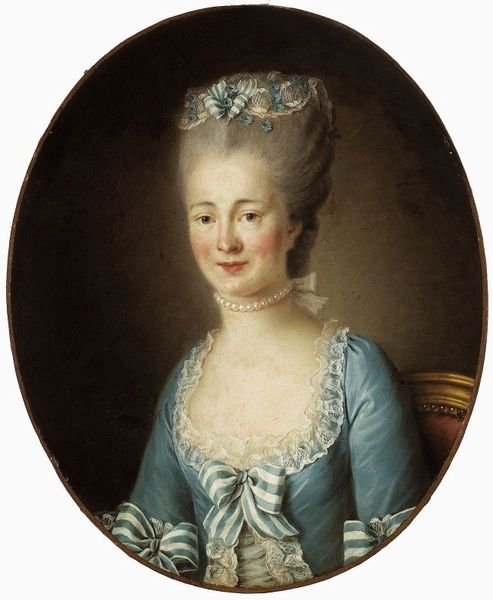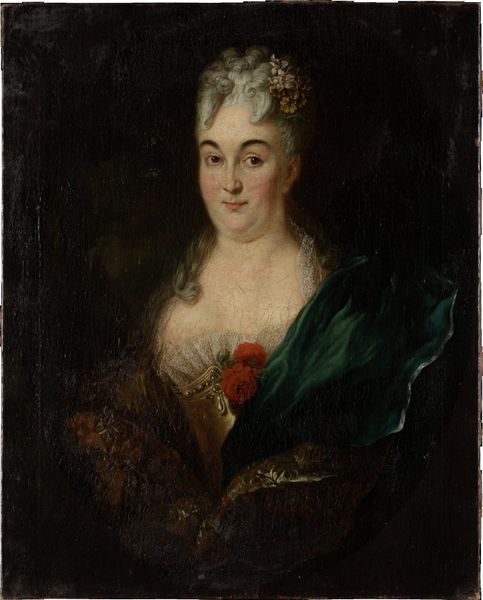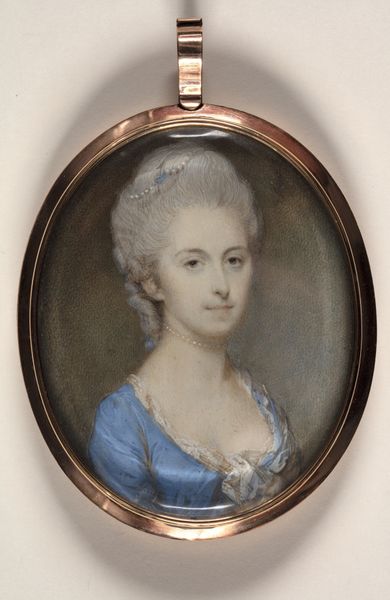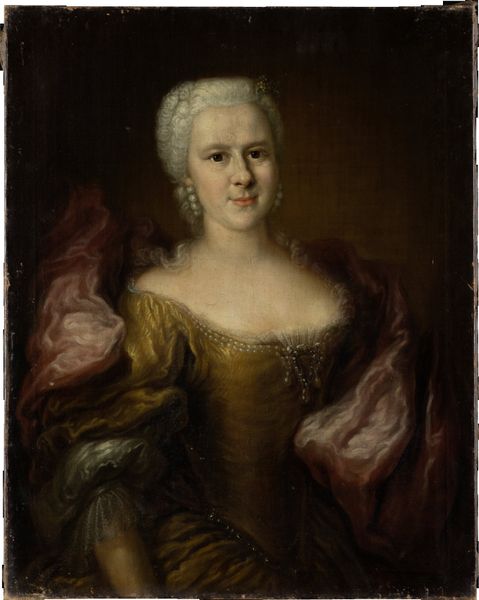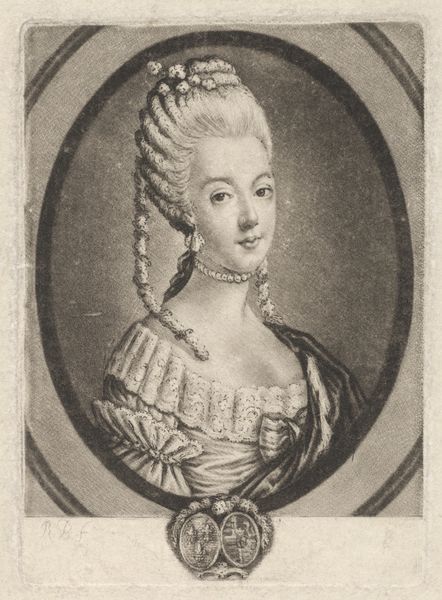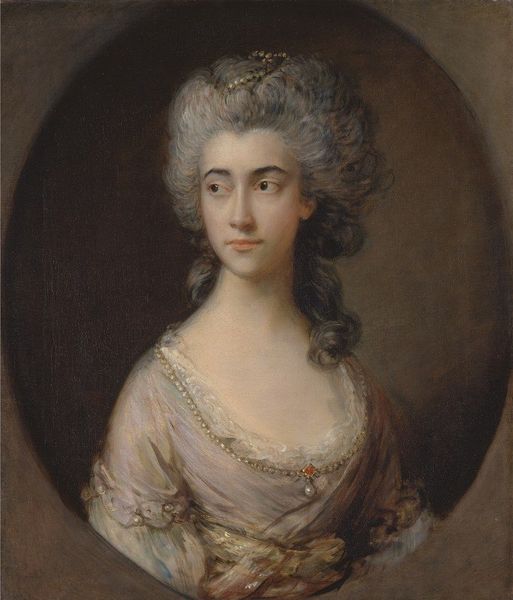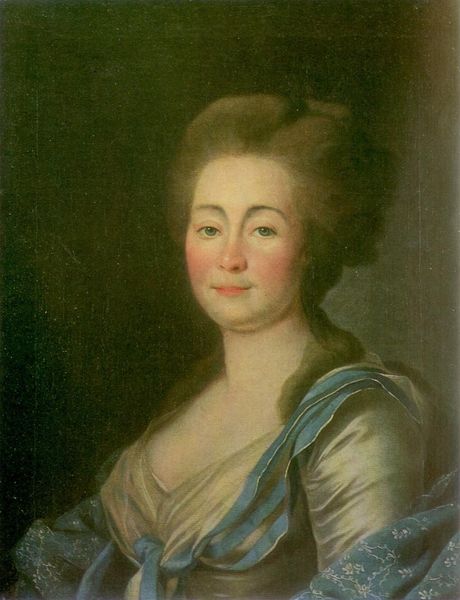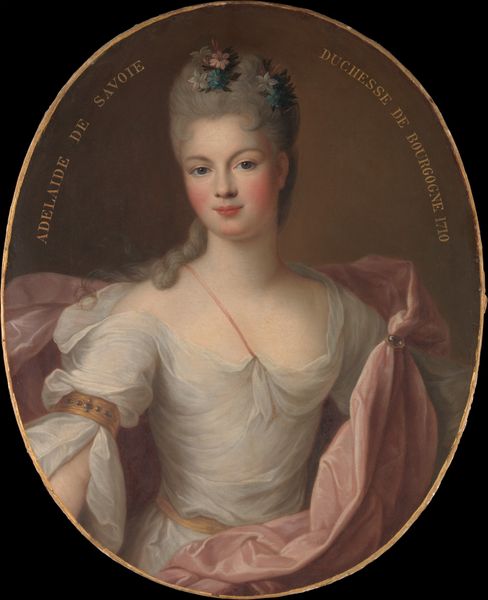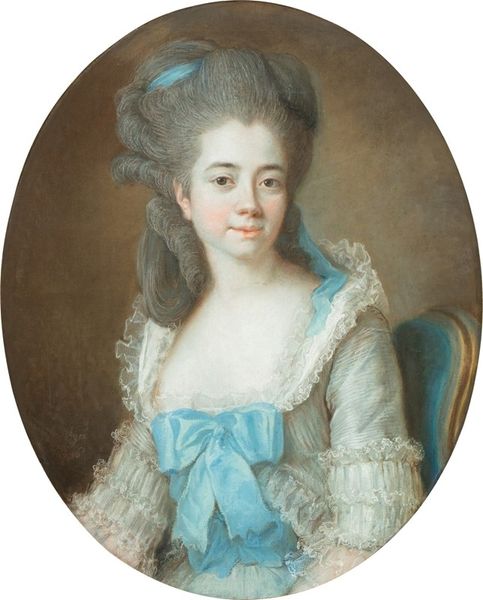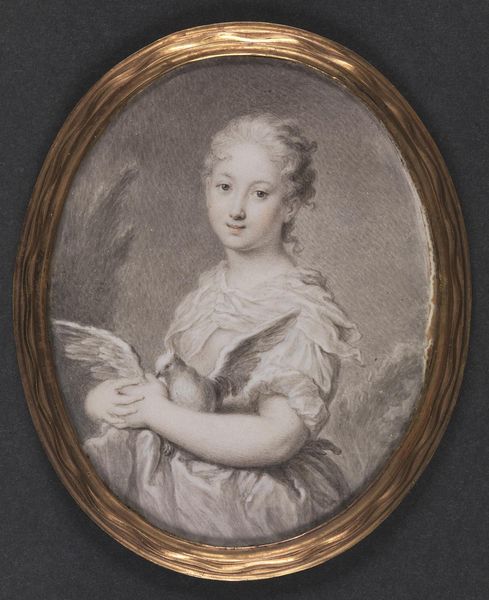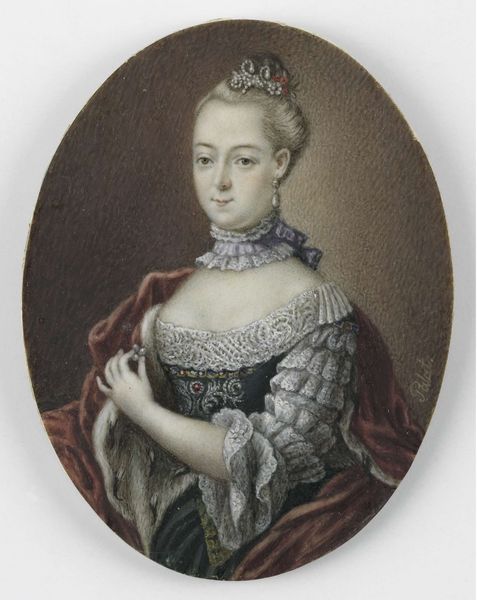
painting, oil-paint
#
portrait
#
baroque
#
painting
#
oil-paint
#
history-painting
#
realism
Dimensions: 55.1 x 38.5 cm
Copyright: Public Domain
Editor: This is a portrait of Marie Friederike Caroline von Geispigheim, an oil painting from around 1745-1755. The subject’s gaze is very direct, and she is adorned with jewelry. What can you tell me about this work, and what jumps out at you? Curator: I notice immediately the trappings of aristocracy. This painting operates as an articulation of power through its opulent, visual signifiers. Consider, though, the constraints placed upon women in the eighteenth century: her class status grants privilege, while her gender confines her. Do you notice any visual clues hinting at the tension between these conflicting forces? Editor: I see that, while adorned, the composition seems more subdued, or at least not as exaggerated as other portraits I’ve seen from that period. Does this perhaps reflect constraints you're discussing? Curator: Precisely. This may indicate an intersection of personal identity and societal expectations. Portraits served as political tools. Commissioned by wealthy families, they affirmed their place in the societal hierarchy. Considering feminist theory, we must also consider the role of women in perpetuating such social constructs. How does this particular image fit into a narrative of gender and power? Editor: So, is the portrait's quietness a kind of resistance, or a survival tactic, within those expectations? Curator: It's likely a carefully constructed balance, negotiating personal expression within a framework of prescribed roles. Analyzing such visual culture offers insight into the lives of women like Marie Friederike. Her portrait performs on multiple levels. How does this revised perspective shape your understanding of the work? Editor: That makes me consider her individual experience in a new way, contrasting the societal expectations with her own self-perception. Curator: Indeed. By questioning conventional interpretations, we gain a deeper understanding of both the art and the historical context that produced it.
Comments
No comments
Be the first to comment and join the conversation on the ultimate creative platform.
